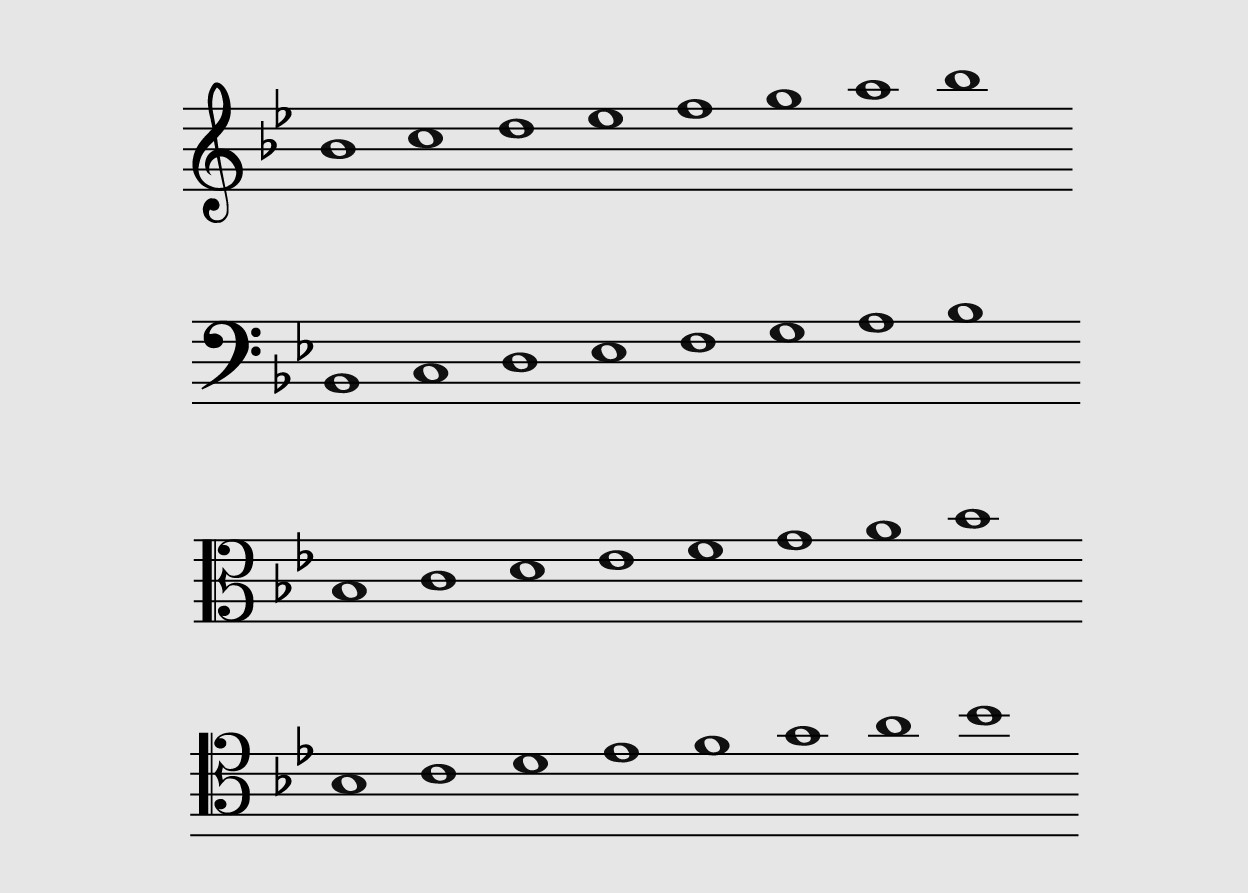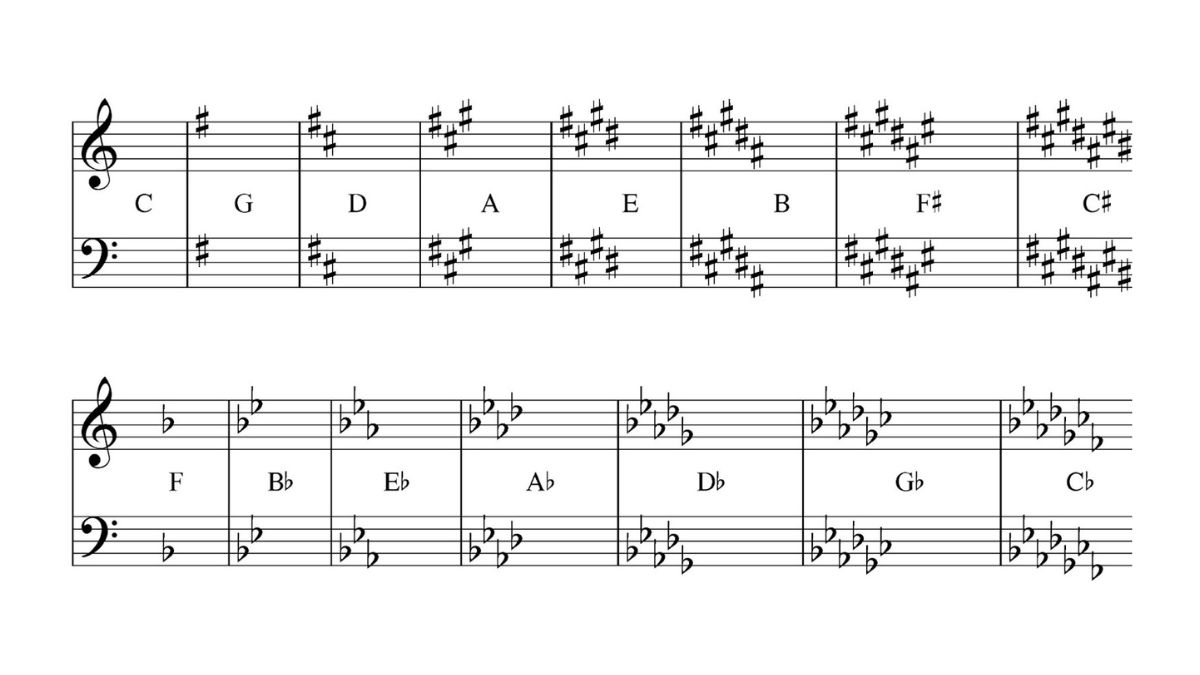Home>Production & Technology>Music Theory>Music Theory: What Is It Called When You Play A Bb Scale In The Key Of C?


Music Theory
Music Theory: What Is It Called When You Play A Bb Scale In The Key Of C?
Published: January 30, 2024
Learn about music theory and discover what it's called when you play a Bb scale in the key of C. Find out the answer and deepen your understanding of music theory.
(Many of the links in this article redirect to a specific reviewed product. Your purchase of these products through affiliate links helps to generate commission for AudioLover.com, at no extra cost. Learn more)
Table of Contents
Introduction
Music theory is a fundamental aspect of understanding and creating music. It provides a framework for analyzing, composing, and performing music by exploring the relationships between notes, chords, and scales. One common question that arises in music theory is what happens when you play a Bb scale in the key of C.
Key signatures play a crucial role in music theory, as they indicate the notes and chords that are typically used within a specific key. The C major scale is often considered the foundation of Western music, consisting of the notes C, D, E, F, G, A, and B. However, when we play a Bb scale in the key of C, we introduce an accidental or a note outside of the key signature. This creates a unique musical effect and can lead to interesting harmonies and melodies.
In this article, we will explore the concept of transposing scales and delve into the intricacies of playing a Bb scale in the key of C. By understanding these concepts, musicians can expand their musical horizons and experiment with different tonalities.
Key Signatures
Key signatures are a fundamental component of music notation that indicate the key in which a piece of music is written. They are represented by a series of sharps (#) or flats (b) placed at the beginning of a staff, next to the clef symbol. Understanding key signatures is essential for musicians, as they provide important information about which notes and chords to play within a specific key.
In Western music, there are twelve possible key signatures, corresponding to the twelve different pitches of the chromatic scale. Each key signature represents a specific major or minor key. For example, the key signature of C major has no sharps or flats, indicating that the piece is in the key of C. On the other hand, the key signature of Bb major has two flats, Bb and Eb, indicating that the piece is in the key of Bb.
The placement of sharps and flats in key signatures follows a specific order. The order of sharps in key signatures can be memorized using the mnemonic device “Father Charles Goes Down And Ends Battle.” This stands for F, C, G, D, A, E, B, which are the notes that get sharped in ascending order. The order of flats in key signatures can be remembered by the mnemonic “Battle Ends And Down Goes Charles’ Father.” This stands for B, E, A, D, G, C, F, which are the notes that get flatted in ascending order.
By understanding key signatures, musicians can quickly identify the tonal center of a piece and understand the harmonic and melodic possibilities within a specific key. This knowledge is crucial for transposing scales, which allows musicians to play a Bb scale in the key of C.
The C Major Scale
The C major scale is often considered the fundamental scale in Western music. It consists of the following notes: C, D, E, F, G, A, and B. This scale is created by following a specific pattern of whole and half steps, which gives it its unique sound and character.
The pattern of whole and half steps in the C major scale is as follows: whole, whole, half, whole, whole, whole, half. This means that we start on the note C, move up a whole step to D, another whole step to E, a half step to F, and so on until we reach the octave of C.
Not only is the C major scale important in its own right, but it also serves as a reference point for understanding other scales and key signatures. As the major scale without any sharps or flats, it provides a neutral starting point for exploring different tonalities and modes.
By internalizing the C major scale and understanding its structure, musicians can develop a strong musical foundation and apply this knowledge in various musical contexts. It serves as a basis for chord progressions, melodies, and improvisation, allowing musicians to create and express themselves within the realm of tonal music.
The Bb Major Scale
The Bb major scale is a commonly used scale in music. It consists of the following notes: Bb, C, D, Eb, F, G, and A. Similar to the C major scale, the Bb major scale follows a specific pattern of whole and half steps to create a unique sound and character.
The pattern of whole and half steps in the Bb major scale is as follows: whole, whole, half, whole, whole, whole, half. This means that we start on the note Bb, move up a whole step to C, another whole step to D, a half step to Eb, and so on until we reach the octave of Bb.
The Bb major scale has two flats, Bb and Eb, indicated by the key signature. These flats alter the pitch of these notes in the scale, giving it a distinct tonal color. It is important to pay attention to the key signature when playing or composing in the key of Bb major, as it determines which notes to emphasize and how the harmony will sound.
Like the C major scale, the Bb major scale serves as a reference point for understanding key signatures and exploring other tonalities. It is commonly used in jazz, blues, and various genres of music due to its rich and warm sound. Musicians often transpose melodies and chord progressions to the key of Bb major to achieve a specific musical effect or to accommodate different instruments.
By familiarizing themselves with the Bb major scale, musicians can expand their harmonic and melodic vocabulary and open up new creative possibilities. It is an essential scale to master for anyone seeking to deepen their understanding of music theory and develop their musical skills.
Transposing Scales
Transposing scales is a useful skill that allows musicians to play a scale starting on a different note, while maintaining the same relative intervals and pattern. This technique is commonly used in music to accommodate different instruments, create different tonalities, or to fit a specific musical context.
When transposing a scale, the intervals between the notes remain the same, but the starting note changes. For example, if we were to transpose the C major scale up a whole step, the new scale would start on the note D and follow the same pattern of whole and half steps as the original scale.
Transposing scales is especially relevant when playing a Bb scale in the key of C. The C major scale has no flats or sharps in its key signature, while the Bb major scale has two flats. To play a Bb scale in the key of C, musicians need to shift the notes of the Bb major scale and adjust their playing accordingly.
Transposing scales requires a solid understanding of intervals and the ability to navigate the instrument or the musical notation. By transposing scales, musicians can explore different tonalities, expand their musical vocabulary, and adapt to different musical situations with ease.
It is important to note that transposing scales not only applies to major scales but can also be done with minor scales, modes, and other types of scales. The key is to maintain the relationships between the notes while changing the starting point.
Overall, transposing scales is a valuable skill for musicians that allows for creativity, flexibility, and adaptability in playing and composing music. It opens up a world of possibilities and allows musicians to explore different sounds and textures within the framework of music theory.
Playing a Bb Scale in the Key of C
Playing a Bb scale in the key of C involves transposing the Bb major scale to align with the key of C. As mentioned earlier, the C major scale has no sharps or flats, while the Bb major scale has two flats (Bb and Eb). To play a Bb scale in the key of C, we need to adjust the notes of the Bb major scale accordingly.
To play a Bb scale in the key of C on a piano or keyboard, we start on the note C and follow the pattern of whole and half steps from the Bb major scale. The notes of the scale would be C, Db, Eb, F, G, Ab, and Bb. This may require using black keys (sharps and flats) that are not part of the C major scale.
On other instruments, such as guitar or saxophone, the fingerings or positions on the instrument may differ. However, the concept remains the same: we adjust our playing to match the Bb scale while starting on the note C.
Playing a Bb scale in the key of C can be a harmonically interesting and musically rewarding experience. It introduces new notes and tones that are not naturally present in the C major scale, expanding the range of musical possibilities. This can create a unique sound and tonality, adding depth and complexity to your compositions or improvisations.
By experimenting with playing a Bb scale in the key of C, musicians can explore different musical textures and create interesting musical phrases. It also develops their ability to adapt to different tonalities and expand their musical understanding.
Whether you are a beginner or an experienced musician, playing a Bb scale in the key of C is an excellent exercise to improve your musical dexterity, ear training, and overall understanding of music theory.
Conclusion
Understanding the concept of playing a Bb scale in the key of C expands our musical horizons and challenges our understanding of key signatures and transposing scales. By transposing the Bb major scale to align with the key of C, we introduce a unique tonality and explore new harmonic possibilities.
Key signatures play a fundamental role in music theory, indicating the notes and chords commonly used within a specific key. The C major scale serves as a foundation, while the Bb major scale introduces flats, creating a distinct sound and character.
Transposing scales allows musicians to play a scale starting on a different note while maintaining the same relative intervals and pattern. When playing a Bb scale in the key of C, we shift the notes of the Bb major scale to align with the C major scale, adjusting our playing accordingly.
Playing a Bb scale in the key of C can be a creative and musically rewarding experience. It introduces new tonalities, expands our musical vocabulary, and encourages experimentation. By exploring different scales and tonalities, musicians can broaden their understanding of music theory and enhance their musical expression.
Whether you’re a beginner learning the ropes of music theory or an experienced musician looking to expand your musical palette, the concept of playing a Bb scale in the key of C is a valuable skill to develop. It opens up a world of possibilities and allows for greater creativity and flexibility in playing and composing music.
So, next time you want to add a unique flavor to your compositions or improvisations, try playing a Bb scale in the key of C. Embrace the challenges and seize the opportunity to explore the vast world of music theory.











